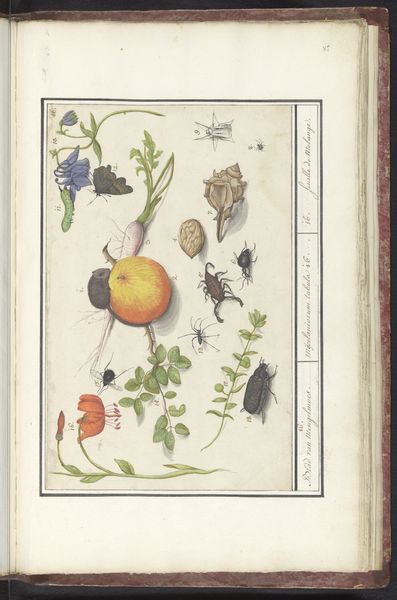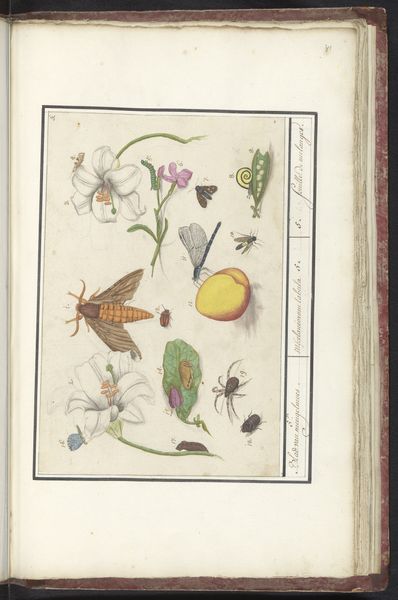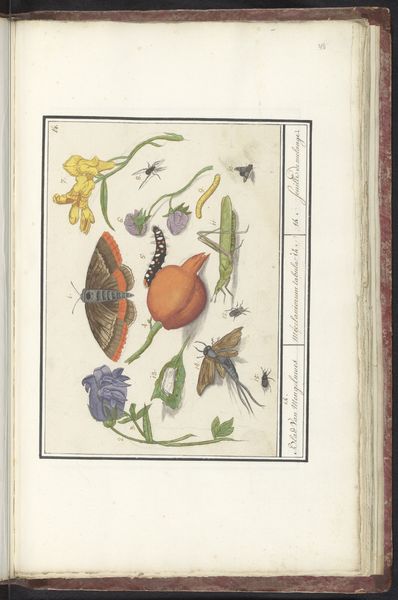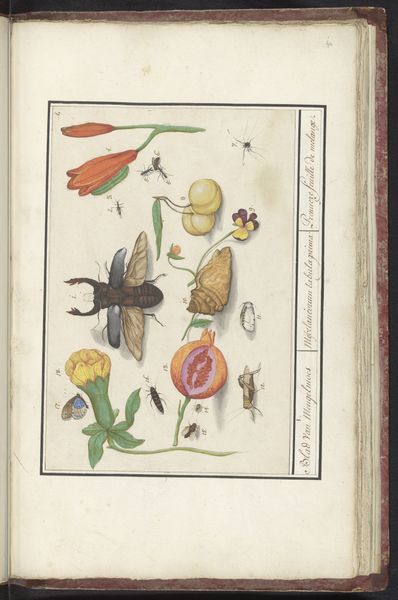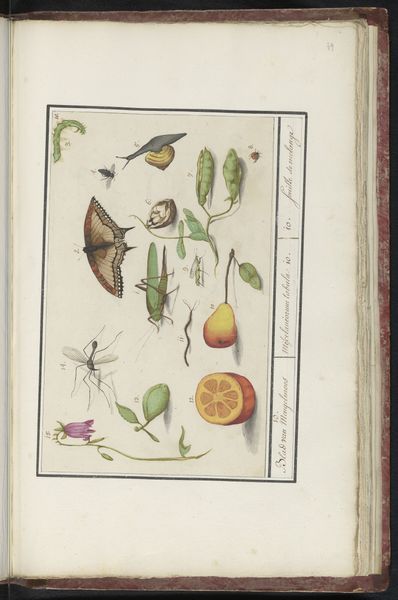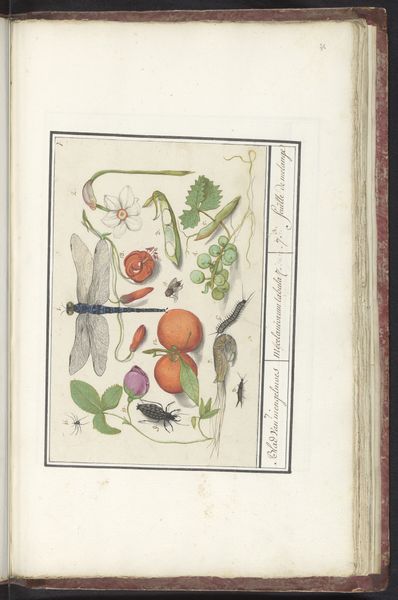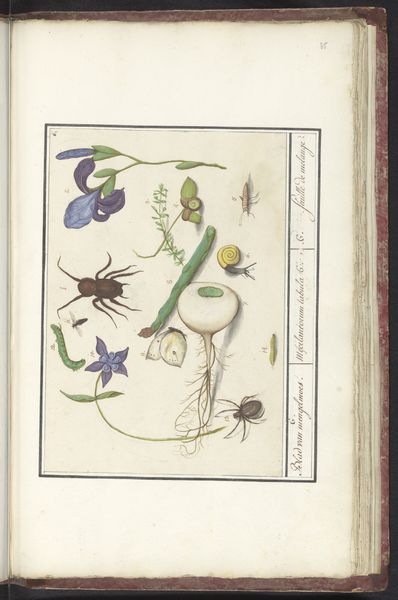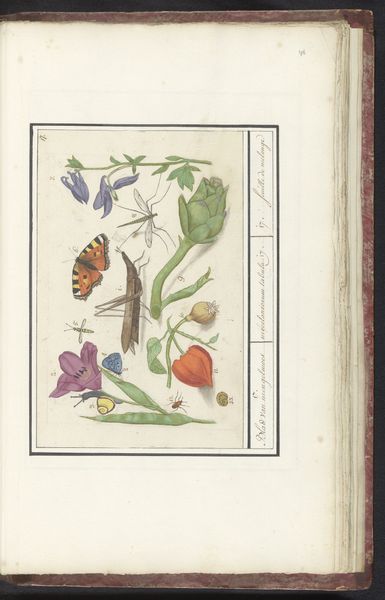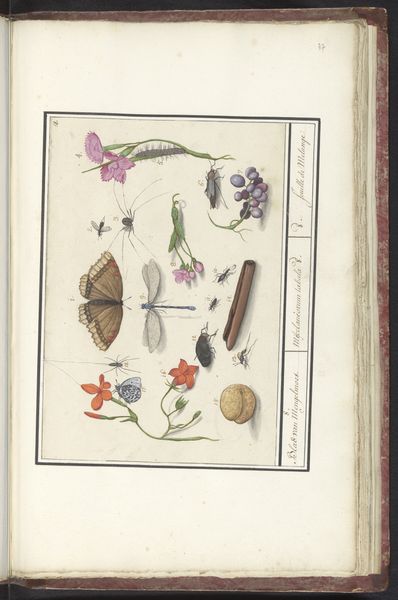
drawing, coloured-pencil, watercolor, pencil
#
drawing
#
coloured-pencil
#
water colours
#
11_renaissance
#
watercolor
#
coloured pencil
#
pencil
#
northern-renaissance
#
academic-art
#
naturalism
Dimensions: height 192 mm, width 268 mm
Copyright: Rijks Museum: Open Domain
Curator: This captivating piece, titled "Natuurhistorische ensemble (nr. 12)", comes to us from the late 16th, early 17th century, crafted between 1596 and 1610 by Elias Verhulst. The work utilizes drawing media with colored pencil and watercolor techniques. Editor: What immediately strikes me is the charm of this collection. It feels so meticulous and carefully observed, like a child’s treasure trove laid out on a single page. Curator: It's fascinating to consider Verhulst’s process. How he moved between pencil to define form and layered watercolor to capture color and texture, simulating naturalism with academic execution. He wasn't just depicting, but constructing an experience for the viewer. Editor: Absolutely. Each object carries weight. The apple evokes associations of temptation, the frog signifies transformation, even the positioning of insects like that butterfly perched high all speak of nature’s symbols. Are these particular cultural symbols from that era? Curator: It’s not overt symbolism in a religious sense, but certainly, the natural world held significant weight, reflecting order, the cycle of life, and the sheer bounty of nature. And consider the materiality here—the paper, the pigments painstakingly sourced and prepared, speak volumes about artisanal skill and investment in craft. Editor: You're right; the colors are lovely and well preserved. And how interesting that something meant to catalog reality seems to convey a certain idyllic perspective too, don't you think? I wonder what kind of person dedicated their time to drawing these specimens. Curator: That tension between objective documentation and subjective interpretation is exactly what makes the work compelling. Each stroke of the pencil, each careful wash of watercolor tells of skill and attention to the environment around them. Editor: The piece resonates today as an investigation into the meaning found in everyday items and the labor-intensive nature of this type of cataloging. Thank you, Curator. Curator: Indeed. It reminds us to pause, observe, and to respect both craft and our ecosystem, providing insights that link consumption, craft and historical perceptions.
Comments
No comments
Be the first to comment and join the conversation on the ultimate creative platform.
